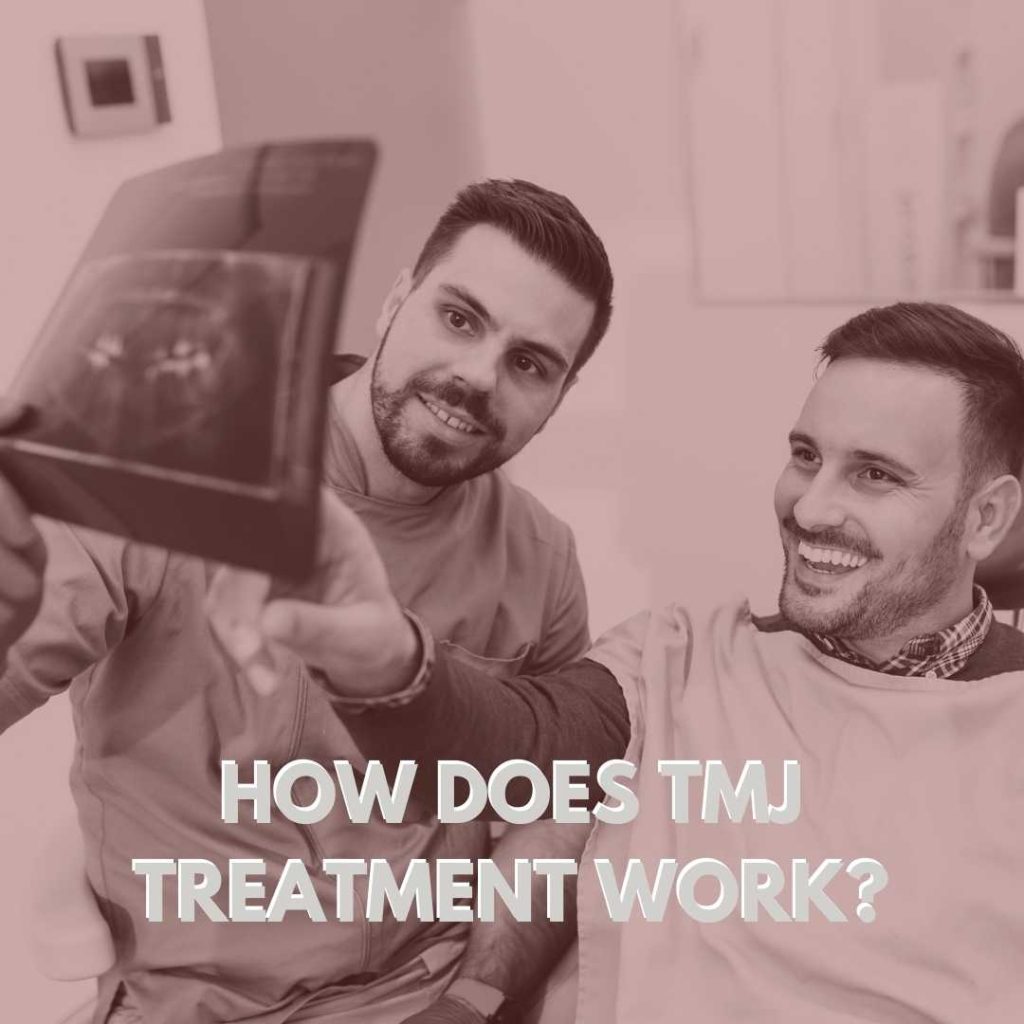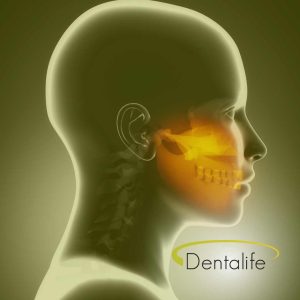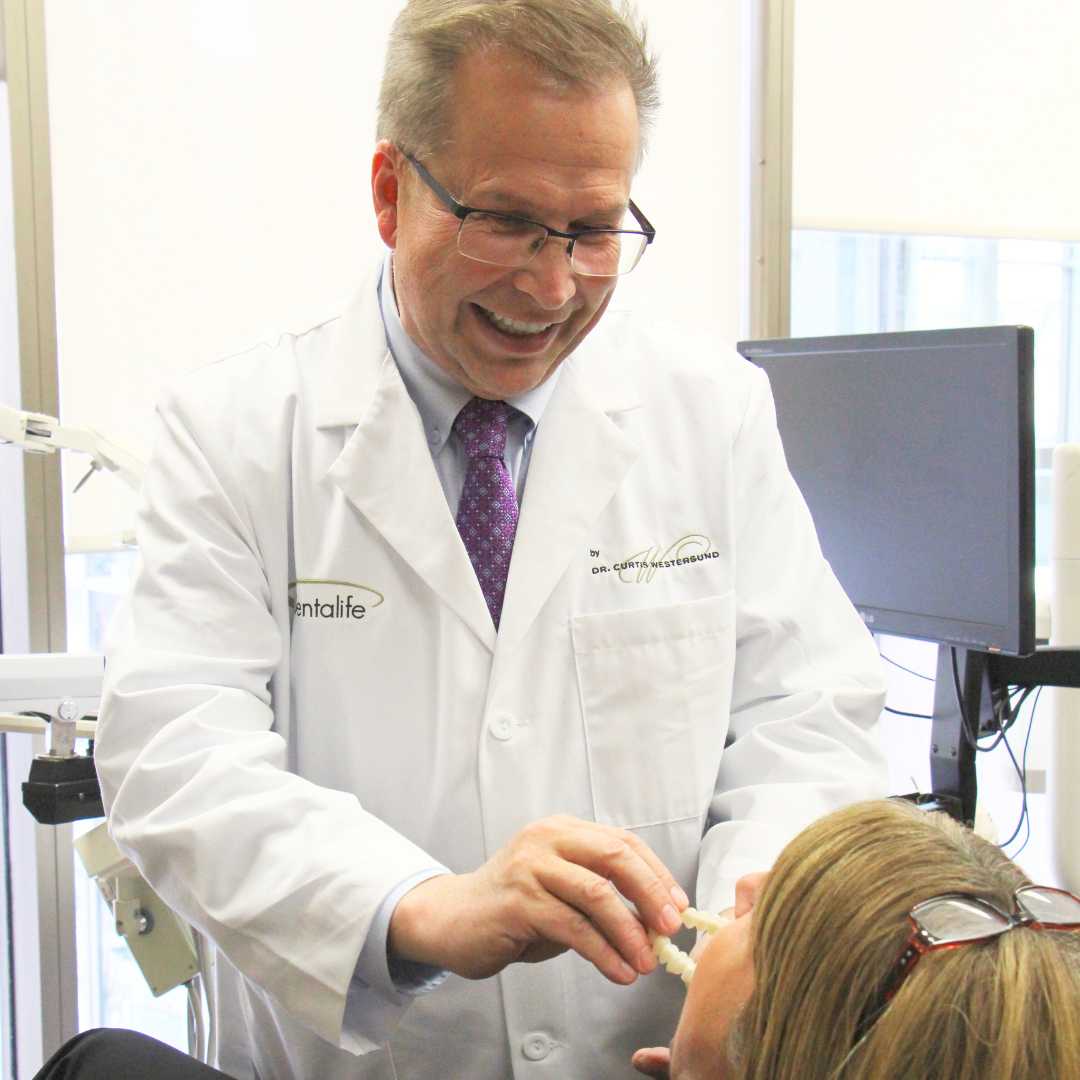Dr. Curtis Westersund, General Dentist and TMJ Practitioner at Dentalife, Calgary Downtown:
“When a dentist treats Temporomandibular joint (TMJ) disorders, the process generally involves a series of non-invasive therapies and, in some cases, oral appliances, specific dental care, or other treatments. The primary goal is to alleviate pain, improve joint function, and address the underlying causes of the TMJ disorder. I see our focus as helping the patient reduce the structural strain in all of their body while it is carrying out daily living activities. To be clear: Dentists need to use other healthcare providers to assist in providing care beyond the teeth and jaws.
At our dental office, the TMJ treatment process typically includes the following steps:
- Diagnosis: We will conduct a thorough examination, which may involve a review of your medical history, a physical examination of the jaw, face, and neck, and imaging studies such as a Cone Beam Cat Scan (CBCT).
- Patient education: From the diagnosis we will explain the nature of the your TMJ disorder, its causes, and the available treatment options. We may also suggest assessment by other specific healthcare providers that we work with to treat how the TMJ disorder affects your body.
- Oral appliances: In cases where an underlying dental issue contributes to the TMJ disorder, we may recommend the use of a precision oral appliance to help align the jaws, head and neck. These appliances can help reposition the jaw, relieve pressure on the TMJ, improve daytime or nighttime airway issues, and prevent further damage caused by teeth grinding (bruxism) or misaligned bites.
- Bite adjustments: Some TMJ disorders are a result of an uneven bite. We may suggest digitally guided occlusal adjustments to balance the your bite.
- Referrals: Depending on the complexity of the TMJ disorder, we may refer you to other healthcare providers for additional treatment that goes past our own scope of care with the teeth and TMJ.
What happens exactly during the TMJ treatment process?
- A functional rebalanceing of the way teeth work together: A one-hour appointment using a digital occlusion analysis system (T-scan) teeth may be adjusted to help improve bite balance and reduce strain in clenching and chewing. These are delicate micro-adjustments to how teeth interact.
- Diagnostic Testing: A three-hour appointment assessing jaw and neck muscle activity, jaw movement, and joint function, complemented by physiotherapy provided by Ultra Low Frequency (ULF) T.E.N.S. This process helps determine a healthier bite starting position.
- Orthotic (TMJ Dental Appliance): A very precise dental appliance is made to help reduce strain in the jaw.
- Follow-Up Care: As your jaw structure and body alignment heals , the fit of the dental appliance is further balanced to ensure continued support for a balanced jaw.
In conjunction with these steps, referrals to other healthcare providers may be given. One such healthcare provider may be a NUCCA Chiropractic Therapy. This gentle upper cervical alignment technique focuses on reducing twisting in the first two vertebrae and is crucial for bite balance. It differs from full spine chiropractic therapy, as it resembles massage-like vibrations behind the ear. Other healthcare providers act as biomechanical therapists that provide exercises and stretching techniques. Medical professionals that deal with concussions may also be suggested.
No matter who we recommend, your bite, your head/neck alignment, and the rest of your body should be assessed and treated appropriately. Integrated care specifically for you gives the best results do reducing strain and pain, as well as returning function to all of the body.
How long does TMJ therapy take?
The duration of Temporomandibular joint (TMJ) therapy can vary considerably due to the diverse range of complexities associated with this condition. Upon diagnosis of the TMJ disorder, a tailored treatment plan can be formulated and thoroughly discussed with the patient. In cases where the TMJ disorder is less severe, the treatment may be relatively brief, consisting of only one or two appointments. However, with more intricate cases involving extensive inflammation and muscle tension, therapy may span several months or even extend beyond a year.
It is essential to recognize that some patients may not achieve a complete recovery due to factors such as damage to the teeth and TMJ, the length of time a TMJ disorder has been present or the severity of the TMJ injury. Special consideration must be given to compromised jaw structures. By closely collaborating with the selected healthcare providers and adhering to the prescribed treatment plan, patients can maximize their chances of experiencing significant improvements in their TMJ-related symptoms and overall well-being.
Is TMJ treatment expensive?
The cost of TMJ (Temporomandibular joint) treatment can vary widely depending on the severity of the condition and the type of treatment required.There are several treatment options that vary with the severity and problems jaw strain causes. Treatment can range from simple too much more complicated treatments. These problems require in-depth conversations and an understanding with your healthcare team.
Insurance coverage for TMJ treatments also varies depending on your specific insurance plan and the treatment recommended. Some plans may cover a portion of the costs, while others may not. It’s essential to consult with your healthcare provider and insurance company to determine the best course of action and understand the associated costs in advance.
What can I expect after TMJ treatment?
Dr. Curtis Westersund, General Dentist and TMJ Practitioner at Dentalife, Calgary Downtown:
“The expected outcome of TMJ treatment by a dentist depends on several factors, including the severity of the disorder, the patient’s overall health, and their adherence to the prescribed treatment plan. Many individuals experience significant improvements in pain, function, and quality of life after undergoing non-invasive dental therapies and using oral appliances.
However, it is essential for patients to work closely with a dental practice like Dentalife and with other healthcare providers to develop a personalized treatment plan that addresses their specific needs and circumstances. Please be aware: Treatment outcomes can vary, and some individuals may require ongoing care to manage their TMJ disorder effectively.
Last but not least: Living in pain is not living at all. So please don’t wait. Waiting will always make things worse. Schedule a diagnosis and evaluation of your options.”
Make an appointment today




